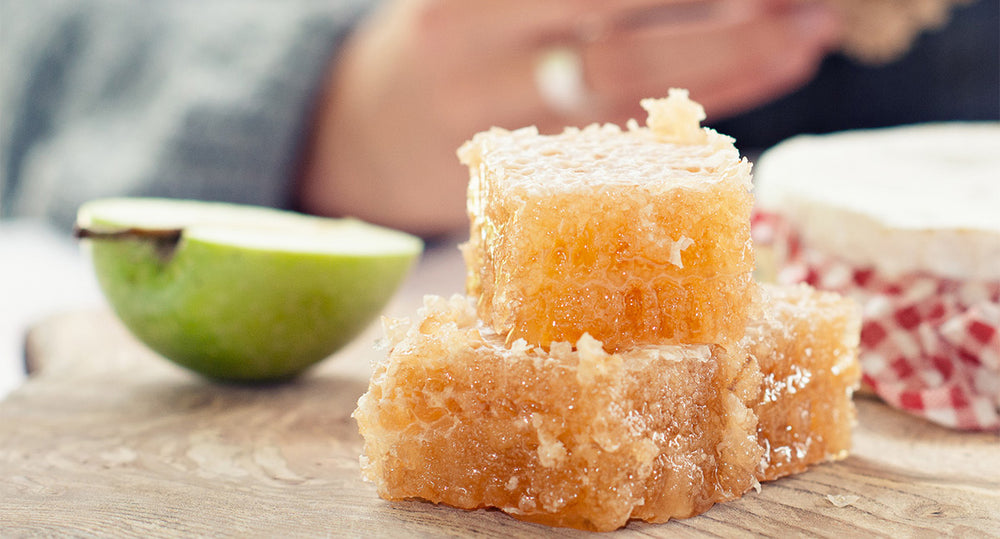How to store honey

One of the beautiful things about honey is that it doesn’t take much looking after. It’s quite happy sitting on a cupboard shelf as long as it’s kept at a constant temperature, away from direct heat or sunlight. Our very own Honey Guru has spent many years experimenting with the best place to store honey. He’s discovered that the best place, is somewhere dark, that remains at a constant temperature.
We suggest you store it in an area that stays at around 15-20 degrees Celsius, away from the oven or fridge or an outside wall that will cause temperature fluctuations. It’s also a good idea to keep it in its original container, with its lid screwed on snugly.
If you do have to transfer your honey to another container, ideally use another glass jar or plastic container with a properly fitting lid. Never use a metallic container as the honey could cause it to oxidise which will impair the flavour of the whole container. We use darkened amber jars to ensure that light doesn’t affect the quality of the honey.
Honey has an extraordinarily long shelf life, and you can extend it by storing it in a cool dark place, but how you serve it will help too. Always use a clean, dry spoon to avoid transferring moisture or food particles to your jar. And as much as it’s tempting, avoid popping your fingers into the jar too, and opt for a spoon instead.
Help! My Honey Has Crystallised!
Necta & Hive say relax! Crystallisation in honey is perfectly normal in this beautifully natural substance. We talk in depth about crystallisation in our separate blog on why honey crystallises.
Crystallisation isn’t a sign of poor quality honey. It does not affect the taste, quality or safety of the honey. How you store your honey and at what temperature, will influence the crystallisation process.
Crystallisation is a complex subject, but in very general terms, the level of glucose vs fructose in a honey will mean that some honey crystallises faster than others. Generally speaking, the higher the glucose level, the quicker a honey will crystallise. Cheaper, supermarket honeys tend to have higher glucose levels than more expensive, healing honeys such as ours.
There is no fixed time for crystallisation, but it can happen in three to six months in unpasteurised honeys such as Necta & Hive Red Gum Honey.
It also depends on the moisture levels of the honey and the climate in which it was made. Since high quality, healing honey is a natural product, the levels of moisture, fructose and glucose varies from batch to batch. Either way, crystallisation is normal and is part of the natural process.
Honey contains water. This water, along with the fructose and glucose are in a constant state of movement. Depending on the temperature that the honey is stored and the proportions of glucose and fructose, the honey may or may not develop crystals when the water molecules separate from the glucose molecules.
So now you know how to store it, how will you eat it? We recommend daily, drizzled over granola, or straight from the spoon!


